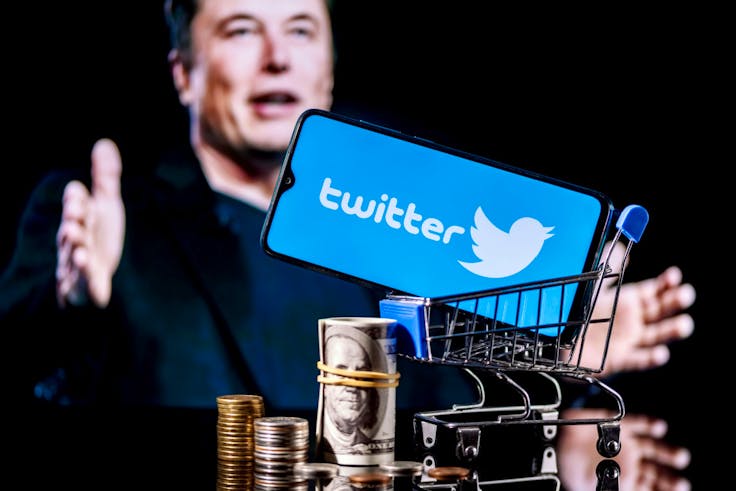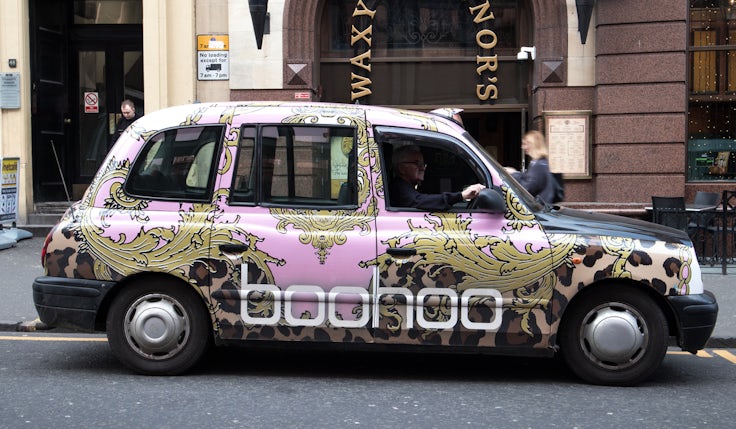Twitter’s rebrand to X slammed as ‘illogical’
Experts have said there appears to be “no best practice branding logic” behind Twitter’s rebrand, describing it as “all very amateur”.

Twitter is rebranding to X in a radical shake-up of the social media site that will see it scrap its long-standing blue bird logo and identity, a move which experts have called “amateur” and without logic.
X CEO Linda Yaccarino announced the news late last night (23 June), detailing the rebrand as a “second chance to make another big impression”. “Twitter made one massive impression and changed the way we communicate. Now, X will go further, transforming the global town square,” she said.
Elon Musk was more glib in his reaction, posting: “And soon we shall bid adieu to the Twitter brand and, gradually, all the birds.”
The rebrand has continued at pace this morning. The new logo – a stylised X on a black background – has gradually been replacing the iconic blue bird. A tweet will now be known as an X, the business said. And X.com now redirects to the Twitter website. Musk also sent out an email to X staff announcing the change and saying it would be the last time he would message from a Twitter email address.
— Elon Musk (@elonmusk) July 23, 2023
Yaccarino called X the “future state of unlimited interactivity”. She said it will reportedly be centred in audio, video, messaging, payments/banking and creating a global marketplace for ideas, goods, service and opportunities, all “powered by AI”.
While much of this is what Twitter was already known for, it’s the nod to payments and banking that leads comparisons to China’s WeChat app, which is the dominant social platform in the country with 1.6 billion active users – and is also used for mobile phone payments.
Musk has long held an interest in making a Western equivalent to WeChat and tweeted when he bought Twitter in October 2022 that the purchase was an accelerant to creating “X, the everything app”. How long it will take to implement those new features remains to be seen.
‘There’s a danger it becomes the Elon Musk show’: What Twitter’s takeover means for brands
The move continues a long-term fascination with the letter ‘X’ for owner Musk. One of his first business ventures was known as X.com, an online banking platform later renamed as PayPal, and he announced in 2017 that he had bought the domain back in a “sentimental” move but one that is now key to his strategy for his social media platform. One of his Tesla cars is known as the Model X and his space company is called SpaceX.
The move, coming so soon after Meta launched Threads, an X competitor tied to its hugely popular Instagram app, is likely to lead to increased speculation about the long-term health of the brand and whether this will attract more users or push those who have stuck around further away.
Industry reaction
Marketing Week columnist and director at Passionbrand, Helen Edwards, says there is “no best practice branding logic” to the move, especially as Twitter had achieved something every brand strives for – for the brand name to become a verb.
From a logo change management perspective, she describes it as “all very amateur”, with “no clean change across all interfaces” from what we’ve seen so far.
Edwards suspects people will continue to use Twitter regardless and “wouldn’t be remotely surprised if it changed back again – either because it achieved nothing and users call it Twitter anyway, or because the whole thing is an expensive ‘gotcha’”.
Indeed, Channel 4 posted, “People still call our streaming service 4OD so good luck [with the name change]”.
It’s a rookie mistake to throw away decades of equity in those assets.
Gareth Turner, Big Black Door
If there was a “meaningful strategy” behind it Edwards says it could be an attempt to get to people to “re-evaluate the brand and generate some buzz”.
“But in the end, a logo change may get some buzz, but it won’t get user re-evaluation unless changes are made at the product/service level – and they ‘fit’ with the name change rationale,” she says.
Elon Musk confirms Twitter’s ad revenue has halved
Marketing consultant at Big Black Door, Gareth Turner, describes the move as “total brand building madness”. He says Twitter’s blue bird logo is one of the most recognised brands on the planet, adding, “it’s a rookie mistake to throw away decades of equity in those assets. I don’t believe that a rebrand is the thing he [Musk] needs to fix there. Especially not over the space of a weekend.”
Turner continues: “Great brands carefully define their assets, ruthlessly protect them and use them consistently over long periods of time. This isn’t just so that the brand team can be the fun police, it’s so that the brand is efficient at creating and maintaining mental availability. This is important because, news flash, people care way less about your brand than marketers think they do.”
Meanwhile, Stefano Puntoni, Wharton professor and behavioural scientist, posted on LinkedIn that rebrands tend to happen for three different reasons: a change of strategic direction, a change of ownership or a panicking leadership. Noting that in X’s case it was likely: “all of the above”.
He continued: “Whatever the reason, rebranding in the middle of a crisis is usually a terrible idea. Rebranding is a hard trick to pull off in the best of times. It’s even harder when the organisation is already in disarray and customers are doubtful.”
Andrew Marsden, an international brand strategist, believes the rebrand to X feels like little more than cosmetic “design changes” as it stands, such as the kind the post office undertook when it rebranded itself as Consignia. “Naïve typographical changes are neither smart nor effective. The fundamentals of the failing brand must be addressed in the strategic repositioning. It’s not graphics, it’s action,” says Marsden.
Marsden stress that “proper rebranding” is usually accompanied by a redefinition of your key differentiators, and is an outward signal of a change in how the brand is to be positioned. He continues: “Repositioning must be deliberate, focussed and well thought through. You must take your loyal consumers with you to preserve cash flow, or confusion will reign. Change is scary, essentially because no one knows what the end result will be.”






Comments